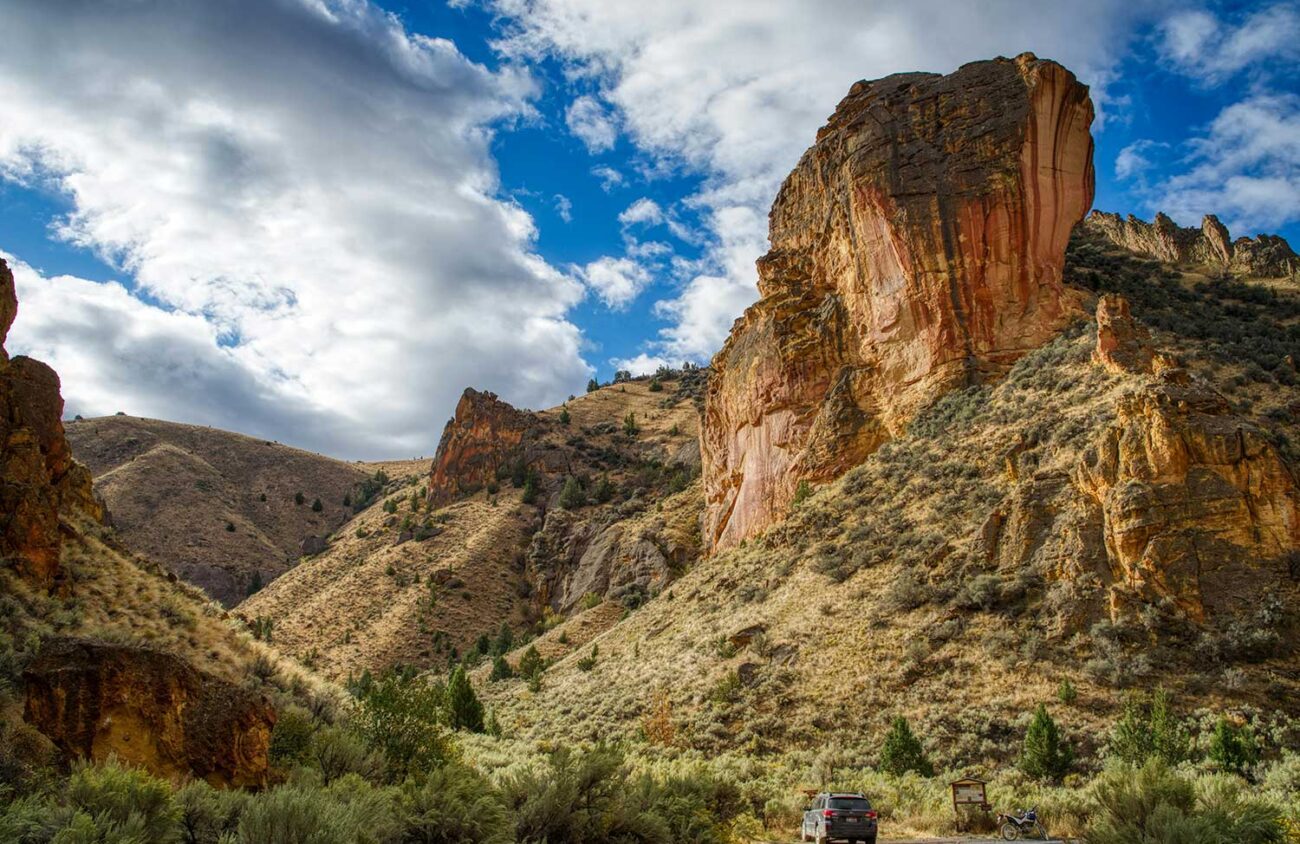By Bonnie Olin
Recently, I attended a showing of the documentary Into the Canyon. It is the story of two men hiking the length of the Grand Canyon to raise awareness of ongoing threats to the canyon despite its protected status. Following the movie, I had the privilege, as a panel member, to help answer questions about the continuing conservation efforts to preserve and protect Oregon’s Grand Canyon — the Owyhee Canyonlands.
Currently, efforts to create an Owyhee Canyonlands National Monument are heating up, and the threats to the Owyhee region are the same as depicted in the documentary movie: uncontrolled development, mining, recreation and aircraft flyovers.
Many good questions came from the audience. One that stood out for me was this: “Why haven’t we heard more about this effort to create a National Monument?”
The loss of an editorial page in our daily newspaper is one reason. However, it was pointed out to me that we still had the Eugene Weekly. And one person suggested, “What about radio programming?” All good points, and I thank those who attended for your suggestions. This guest viewpoint is my way to help remedy the lack of recent information on this topic.
The Owyhee is a region where the three states of Idaho, Oregon and Nevada conjoin. It’s a huge area with over 9 million acres of wilderness-quality public lands. Most of it remains free of paved roads, creating one of the largest, and increasingly rare, intact sagebrush environments in the lower 48 states. You simply will not find yourself there on the way to anywhere else.
Despite growing up in Oregon and spending time in her deserts, I did not know that our sagebrush steppes were unique to the North American continent. Take a moment to think about that.
Nowhere else on our planet will you find sagebrush steppes like the ones we enjoy. So it should come as no surprise that there are nearly 30 plant species found nowhere else on Earth but in this landscape. There are over 200 species of wildlife that live in the Owyhee: pronghorn antelope, pygmy rabbits, the imperiled greater sage-grouse, many raptors, California bighorn sheep, cougar, bobcat, mule deer and elk to name a few. The Owyhee basin provides some of the last, best habitat for redband trout, a unique “desert-type” trout, according to the nonprofit Trout Unlimited.
In addition, there are hundreds of known archaeological sites in the Owyhee. And it is the ancestral home to the Shoshone, Paiute and Bannock tribes with many locations in the region sacred to their communities.
When we are in the Owyhee region, the solitude, the night skies and the quiet are unsurpassed. Within its canyon walls, the river has carved out a corridor lined with hoodoos and spires leaving us with some of the best examples of rhyolite formations in the world. And yet only 5 percent of the Owyhee Canyonlands are permanently protected.
Thirty years ago, isolation still protected the Owyhee. But that is no longer true. As neighboring Idahoans (fast-approaching a million people in the Treasure Valley), Oregonians and others have discovered the beauty of the Owyhee, they have also discovered that access to Oregon’s portion of the region is the most accessible. With uncontrolled recreation, invasive plant species, mining claims, uncontrolled development and a request by the U.S. Air Force to use the Owyhee for supersonic fighter jet training threatening the area, we stand to lose it all.
The latest broadly supported proposal to protect that portion of the Owyhee in southeast Oregon was developed by Sen. Ron Wyden (S.1890) and cosponsored by Oregon Sen. Jeff Merkley. However, congressional action appears unlikely. So ONDA, the Oregon Natural Desert Association, is asking President Joe Biden to establish a National Monument in Oregon that mirrors the senate bill — protecting 1.25 million acres of public land in Oregon’s Malheur County.
An Owyhee Canyonlands National Monument would safeguard these lands and waters that have cultural, historic, ecological and scientific importance for you and future generations to enjoy. To learn more about protecting the Owyhee and creating a National Monument, and to answer any remaining questions you have, go to ONDA’s website at Protecttheowyhee.org and read the monument proposal, check out their frequently asked questions, and then join me in signing the petition now.
